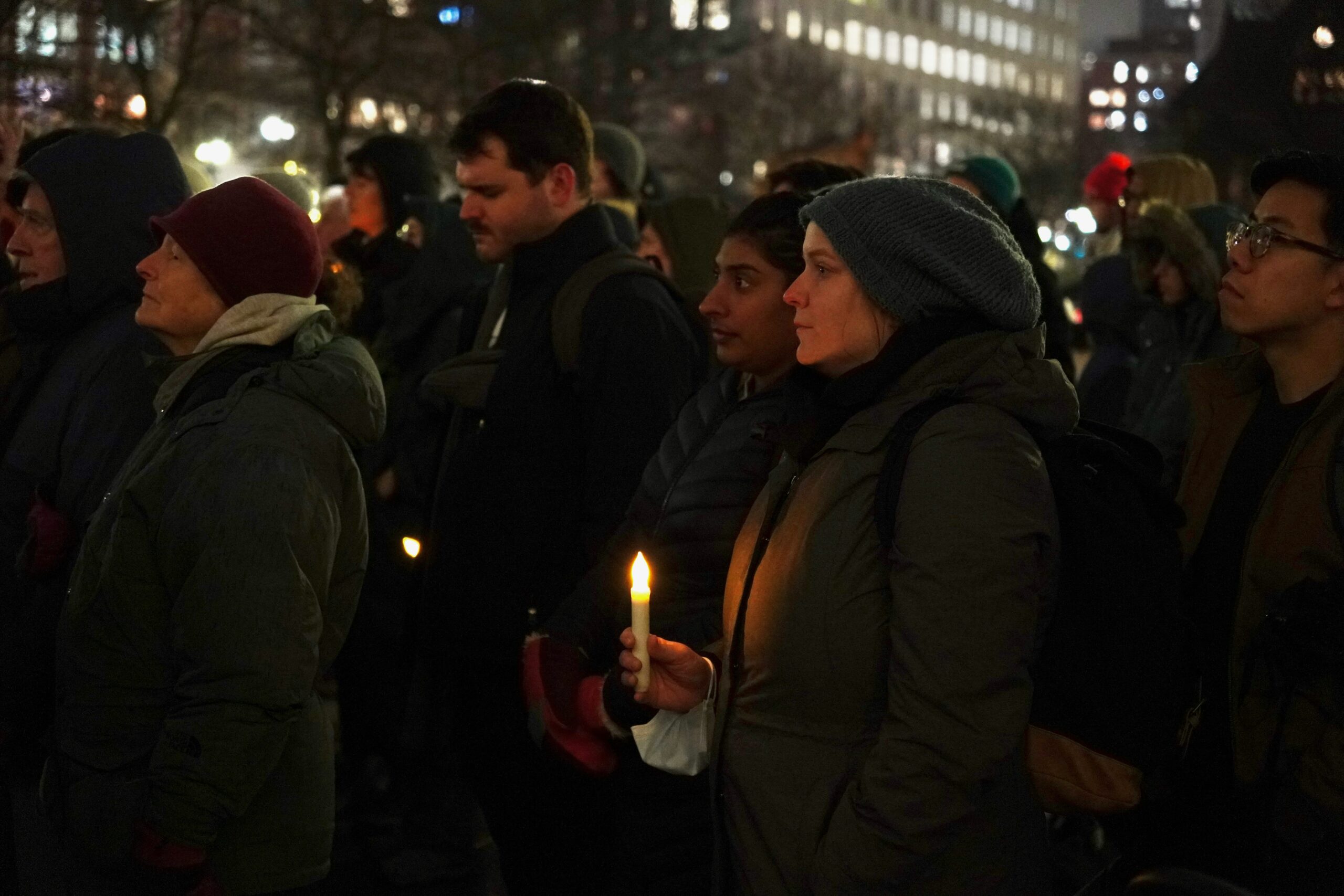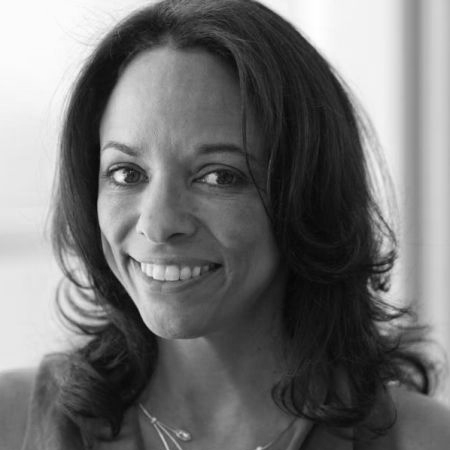
May 20, 2024
How to give peace a chance at the office
Reverend Mark E. Fowler, the charismatic CEO of the Tanenbaum Center for Interreligious Understanding, feels your pain.
“Trust me, there are moments when I just throw myself onto the couch and put my face on the pillow and scream,” he says via Zoom.“And then after that, it’s over. It’s kind of like, okay, what do we need to do now?”
Tanenbaum has been focused on combating religious prejudice, promoting justice, and building respect for religious differences for 32 years now, inspiring work that requires us to face difficult truths about the world and ourselves. The Center’s programs revolve around four areas that intersect and inform each other: Education, Health Care, Workplace, and Peacebuilding.
Fowler describes his 17-year tenure at the organization as a journey of hope — despite the occasional primal scream — and finds the porous nature of their focus areas particularly valuable now.
He’s hoping peacebuilding will take off at scale in business.
“There are transferable relationship-building practices and tools between our four programs, including our Workplace and Peacebuilding program,” he says. “For example, our Workplace resource on Purposeful Conversations shares peacebuilding techniques from Tanenbaum’s Peacemakers in Action Network that can be implemented in workplaces across industry and region to support authentic discussions across differences.”
Tanenbaum created a corporate membership program in 2012 as part of their broader effort to address religious inclusion in the workplace. For employers, the resource is not just a nice-to-have, he says.
“The United States’ increasing religious diversity, as well as the increasing globalization of work, means companies need to address religion as a part of their overall DE&I initiatives to stay competitive,” Fowler says. Today, there are 91 members, including Bloomberg, Citi, Edward Jones, Google, and Merck.
Fowler says that peacebuilding in the workplace isn’t as intimidating as it sounds.
“We frame peacebuilding in a way that can be applied practically in daily situations to build inclusive and respectful behavior at work,” he says.
In addition to helping diverse teams connect better in good times, these skills can lower the temperature during times of great distress, like now.
“They help decrease the anxiety about what to do if an employee needs support when an issue around religion arises, he says. “We saw this last point most recently with employee requests in response to the Israel-Hamas war.”
Peacebuilding as a leadership practice requires us to understand our conflict resolution style. “How do you respond when a conflict occurs, whether internal, between individuals, or with a group?” (Do you know yours? I don’t think I can describe mine.) “People are very, very willing to share their position with you. Not as much are they able to share where their interests and needs lie and what drives that position.”
But peacebuilding also requires the willingness to learn what one doesn’t know — about faith, history, and the use of religion as a tool of exclusion.
“There’s history there — of religion, of DEI, but also religion’s role in diversity, equity, and inclusion,” Fowler says. “Religion has long had a fingerprint on who was able to work, how much they worked, and whether or not they were able to rise within the company they were in.”
Of course, I’ve condensed the elements of peacebuilding work for the sake of this column, but I think you can get a sense of it — and the emotional intelligence, self-awareness, empathy, self-regulation, and cultural humility that it needs to take root.
While it’s not a quick fix — the best things never are — the commitment to it can distinguish a good program from an unsuccessful one, or a meaningful statement of support from one that resembles a soundbite from television or social media.
In the rush to respond after the October 7 attack by Hamas, Fowler notes, “Both individuals and institutions saw that by making statements very early and very quickly, they hadn’t actually considered what the impact of that might be.”
Giving peace a chance at work means having faith in the inclusion work that’s already been accomplished.
I’ll give Fowler the last word, again.
“We can make room for these conversations; it’s a power we do have,” Fowler says. There is an enormous foundation of successful race and LGBTQ+ identity work to draw on that seemed equally insurmountable at the time. “We may need to build infrastructure for it. We may need to build capacity for it. But it’s not so different.”
A version of this essay was originally published in the Equity Observer email newsletter. Catch up on past issues here. Sign up for insightful commentary, breaking news, and community shout-outs delivered twice weekly. Find your people.
Observed
View all
Observed
By Ellen McGirt
Related Posts

Business
Courtney L. McCluney, PhD|Essays
Rest as reparations: reimagining how we invest in Black women entrepreneurs

Design Impact
Seher Anand|Essays
Food branding without borders: chai, culture, and the politics of packaging

Graphic Design
Sarah Gephart|Essays
A new alphabet for a shared lived experience

Arts + Culture
Nila Rezaei|Essays
“Dear mother, I made us a seat”: a Mother’s Day tribute to the women of Iran
Recent Posts
Courtney L. McCluney, PhD|Essays
Rest as reparations: reimagining how we invest in Black women entrepreneurs Food branding without borders: chai, culture, and the politics of packaging Why scaling back on equity is more than risky — it’s economically irresponsible Beauty queenpin: ‘Deli Boys’ makeup head Nesrin Ismail on cosmetics as masks and mirrorsRelated Posts

Business
Courtney L. McCluney, PhD|Essays
Rest as reparations: reimagining how we invest in Black women entrepreneurs

Design Impact
Seher Anand|Essays
Food branding without borders: chai, culture, and the politics of packaging

Graphic Design
Sarah Gephart|Essays
A new alphabet for a shared lived experience

Arts + Culture
Nila Rezaei|Essays

 Ellen McGirt is an author, podcaster, speaker, community builder, and award-winning business journalist. She is the editor-in-chief of Design Observer, a media company that has maintained the same clear vision for more than two decades: to expand the definition of design in service of a better world. Ellen established the inclusive leadership beat at Fortune in 2016 with raceAhead, an award-winning newsletter on race, culture, and business. The Fortune, Time, Money, and Fast Company alumna has published over twenty magazine cover stories throughout her twenty-year career, exploring the people and ideas changing business for good. Ask her about fly fishing if you get the chance.
Ellen McGirt is an author, podcaster, speaker, community builder, and award-winning business journalist. She is the editor-in-chief of Design Observer, a media company that has maintained the same clear vision for more than two decades: to expand the definition of design in service of a better world. Ellen established the inclusive leadership beat at Fortune in 2016 with raceAhead, an award-winning newsletter on race, culture, and business. The Fortune, Time, Money, and Fast Company alumna has published over twenty magazine cover stories throughout her twenty-year career, exploring the people and ideas changing business for good. Ask her about fly fishing if you get the chance.